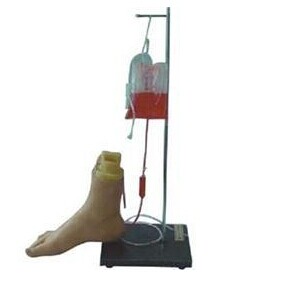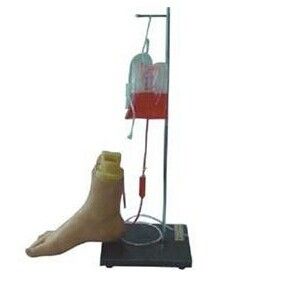In the vast field of medical care, each nursing skill is an indispensable building block on the path of the caregiver. The foot intravenous injection model, as a special and extremely challenging skill practice tool, is undoubtedly the starting point of many nursing staff skill challenges.
The foot intravenous injection is significantly more difficult than other common injection sites, such as the arm or the back of the hand. Blood vessels in the foot are smaller and harder to reach, and are obscured by multiple tissues such as bone, muscle and skin, making the injection process uncertain and risky. Therefore, it is undoubtedly a major challenge for caregivers to master the skills of foot intravenous injection.

The emergence of the foot intravenous injection model provides a safe and controlled practice environment for caregivers. The design of the model seeks to restore the real structure of the human foot, including details such as blood vessel distribution and skin texture, so that the nursing staff can practice repeatedly in the simulated real scene. Through continuous attempts and adjustments, nurses can gradually familiarize themselves with the characteristics of foot blood vessels, master the Angle, depth and strength of injection, and thus improve the accuracy and success rate of injection.
In this process, it is not only a practice tool, but also a starting point for skill challenges. It inspires the courage and determination of the nursing staff to face the difficulties, and urges them to constantly challenge themselves and break through the limits. With constant practice and reflection, caregivers can gradually overcome their fear and unease about foot IV injections and build confidence and confidence in their skills.
In short, foot intravenous injection model, as the starting point of nursing skills challenge, not only improves the professional skills and level of nursing staff, but also promotes the teaching and inheritance of nursing skills. In the future of medical care, we believe that these highly trained and constantly challenged nursing staff will be able to provide patients with better quality and safer nursing services with a more professional and confident attitude.

